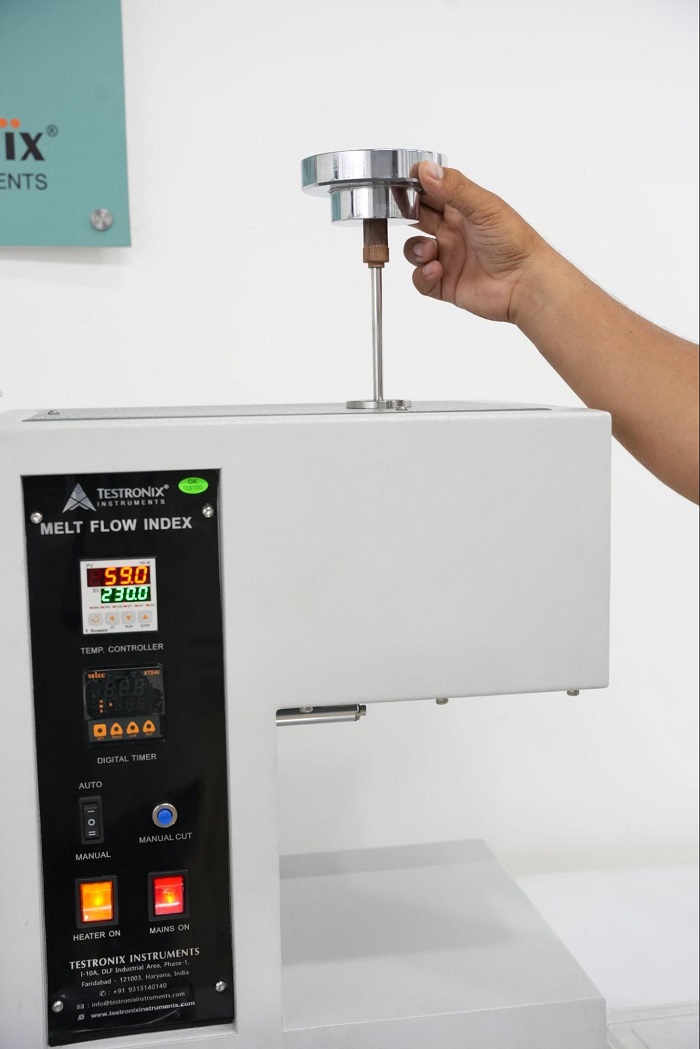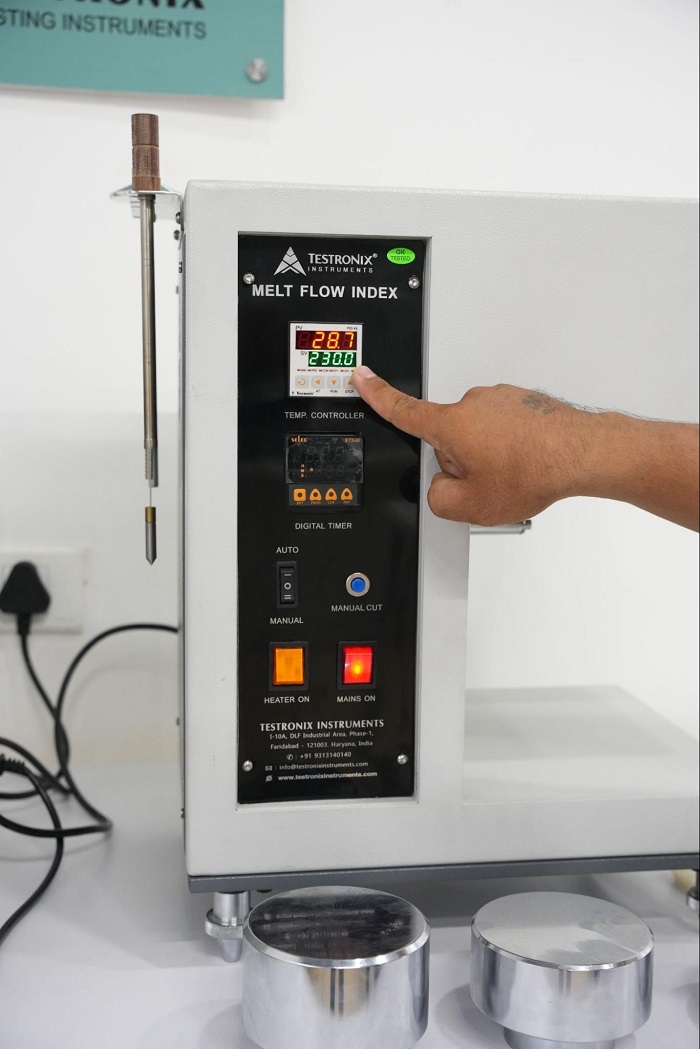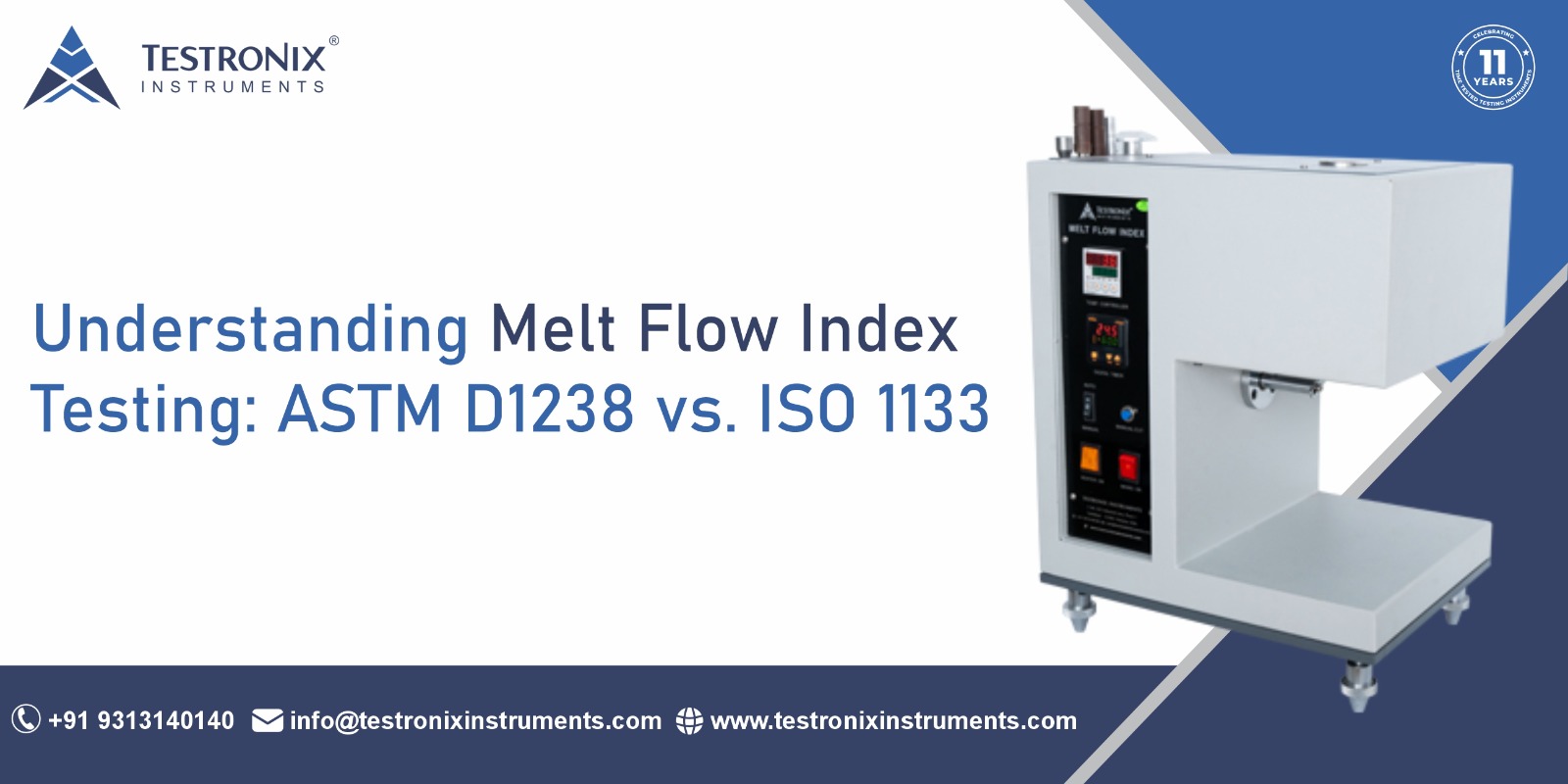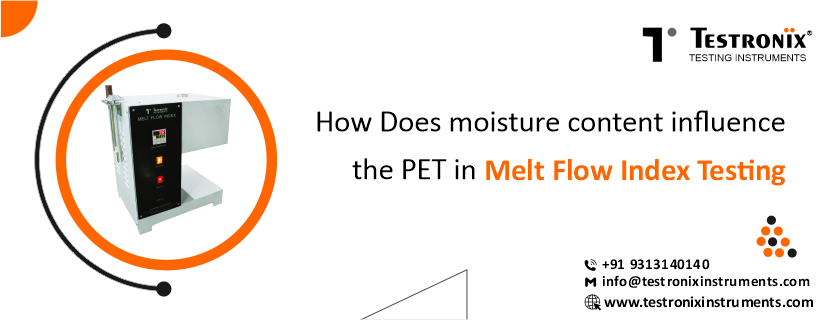It is extremely fundamental to know the properties of materials to be utilized, to meet the fast pace of creation so that a good quality production can proceed. For packaging, the automotive industry, and consumer products, knowing the flow behavior of thermoplastics predicts the performance of a product and maintains uniformity in the product. MFI testing plays a significant role in determining the ease with which polymers can be processed and directly affects the quality, durability, and functionality of the final products.
This blog describes the basic principles of MFI testing and the reasons for adhering strictly to standard procedures.
What is Melt Flow Index Testing?
The rate of the melt of a polymer flow into the specific die under some standardized temperature and pressure is evaluated by MFI to better understand the behavior of polymers in terms of molding, for instance, or during the process of extrusion. For that reason, the result from MFI gives quite a good direct estimation as regards the viscosity in regard to the flow; otherwise, it contains other aspects that may be interpreted.

In MFI testing, the sample of the polymer is heated to a certain temperature inside the test apparatus. At a specified weight, there is pressure, and through a die, the molten material will flow out, and the amount extruded over a defined period of time is recorded. The higher MFI values mean lower viscosity and easier flow, while lower values mean higher viscosity and difficult processability. MFI testing can also detect changes in polymeric batches, which means that quality control by manufacturers is assured.
Why Testronix? Building Authority Through Success Stories and Expertise
Testronix has been the trusted leader in providing testing solutions to manufacturers for over 11 years, helping them upgrade their quality control processes. With a reputation for excellence and reliability, Testronix offers advanced MFI testing equipment designed to meet the standards of both ASTM D1238 and ISO 1133, ensuring versatility to meet diverse industry requirements.
Our client success stories demonstrate how Testronix solutions have streamlined the quality assurance process, reduced material inconsistencies, and ensured compliance with regulations.
ASTM D1238 and ISO 1133 Standards Overview
There are two primary standards that are applied for MFI testing. These are ASTM D1238 and ISO 1133. Both have detailed procedures to ensure accurate and reproducible results. Learn more about them below:
ASTM D1238
This standard is widely used, and details procedures for measuring the melt flow rate of thermoplastics. It includes test conditions such as temperature and die dimensions, as well as the load weight. ASTM D1238 covers two procedures:
- Procedure A: Used for manual testing
- Procedure B: Used for automated systems. Its use provides accommodation for any apparatus in most applications.
ISO 1133
Its principle is the same as of ASTM D1238 except that it has stringent necessities, especially for polymers. ISO 1133 also differentiates mass flow rate (MFR) from volume flow rate (MVR), thus bringing even wider flexibility in testing by how the material's behavior actually is.
Key Differences Between ASTM D1238 and ISO 1133:
Both of these standards measure melt flow, though they may use slightly different temperatures, weights, or testing conditions.
- ISO 1133 focuses more on MVR. This gives further insight into the volumetric flow properties of materials.
- The difference in calibration and equipment setting between these two standards would mean results are slightly different when tested according to each.
Why is Testing Melt Flow Index Using Testronix Important in Product Quality?

There are several key advantages of product quality, consistency, and reliability supported by MFI testing with Testronix equipment. Here's what our Melt Flow Index testers can do for your business:
- Improved Quality Control: It detects any type of irregularity in the polymer flow properties of manufactured products by using precise MFI measurements. This ensures every batch meets its specifications. Such accuracy is also required in applications that demand the specific behavior of the material.
- Optimization of Production Process: It enables the optimization of parameters involved in the processing so that there are fewer chances of machine downtime or product defects. Ensuring that material flows properly during manufacture helps companies avoid expensive delays and scrap.
- International Standard Compliance: Testronix's MFI testers are compliant with both ASTM D1238 and ISO 1133, which allows flexibility to meet various international regulations. This flexibility is priceless for manufacturers operating globally or in regulated markets.
- Durability and Longevity: Testronix's MFI testing equipment is built to last long and is made of quality materials and the latest technology. This durability ensures constant performance even in the most demanding industrial environments.
- Customer Support and Training: Our customer success means more than delivering quality equipment to our customers. We have designed our total support program, including training and calibration, to optimize the usage of testing equipment by the customers.
FAQs
1. How does ASTM D1238 differ from ISO 1133?
Although both are related to MFI, they differ in some procedural terms, for instance, temperature and specific weight requirements, as well as calibration settings.
2. Can Testronix’s MFI testers comply with both ASTM and ISO standards?
Yes, Testronix MFI tester are built according to the specifications of ASTM D1238 and ISO 1133. Thus, it is very flexible for international manufacturers.
3. How frequently should MFI testing be done during production?
It depends upon the requirements of the industries. The common frequency used in the market is testing at the beginning of a production run or with a new material batch.
Contact us at:
Phone: +91 9313 140 140





